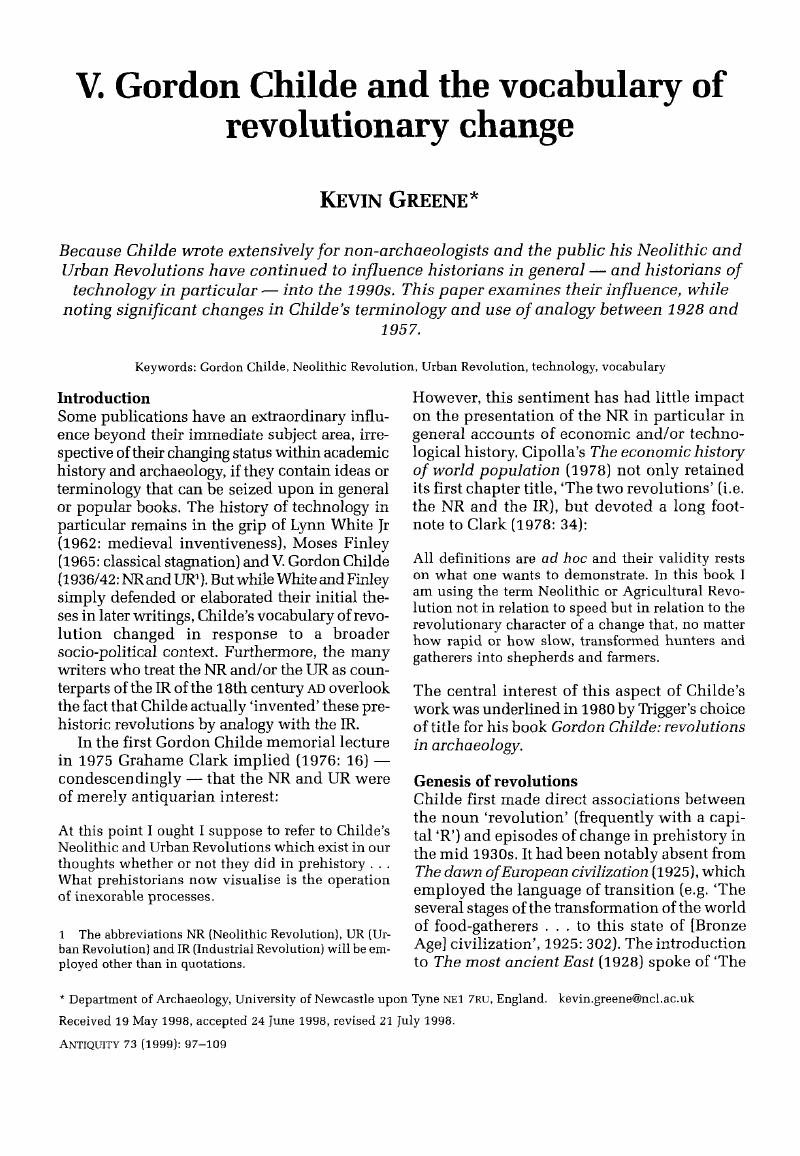Crossref Citations
This article has been cited by the following publications. This list is generated based on data provided by Crossref.
Mcbrearty, Sally
and
Brooks, Alison S.
2000.
The revolution that wasn't: a new interpretation of the origin of modern human behavior.
Journal of Human Evolution,
Vol. 39,
Issue. 5,
p.
453.
Adams, Robert McC
2001.
Complexity in Archaic States.
Journal of Anthropological Archaeology,
Vol. 20,
Issue. 3,
p.
345.
Bayman, James M.
2001.
Emic and Etic perspectives on the history of archaeology.
Reviews in Anthropology,
Vol. 29,
Issue. 4,
p.
361.
Wilson, Andrew
2002.
Machines, Power and the Ancient Economy.
Journal of Roman Studies,
Vol. 92,
Issue. ,
p.
1.
Wilson, Andrew
2002.
Machines, Power and the Ancient Economy.
Journal of Roman Studies,
Vol. 92,
Issue. ,
p.
1.
Manning, Patrick
2003.
Navigating World History.
p.
121.
Greene, Kevin
2006.
A Companion to Archaeology.
p.
155.
Riel-Salvatore, Julien
2010.
A Niche Construction Perspective on the Middle–Upper Paleolithic Transition in Italy.
Journal of Archaeological Method and Theory,
Vol. 17,
Issue. 4,
p.
323.
Nowell, April
2010.
Defining Behavioral Modernity in the Context of Neandertal and Anatomically Modern Human Populations.
Annual Review of Anthropology,
Vol. 39,
Issue. 1,
p.
437.
고일홍
2011.
An Examination of V. Gordon Childe’s Understanding of the Historical Process.
Journal of Humanities, Seoul National University,
Vol. null,
Issue. 65,
p.
159.
Förster, Frank
Großmann, Ralph
Hinz, Martin
Iwe, Karina
Kinkel, Hanno
Larsen, Annegret
Lungershausen, Uta
Matarese, Chiara
Meurer, Philipp
Nelle, Oliver
Robin, Vincent
and
Teichmann, Michael
2013.
Towards mutual understanding within interdisciplinary palaeoenvironmental research: An exemplary analysis of the term landscape.
Quaternary International,
Vol. 312,
Issue. ,
p.
4.
Uribe, Mauricio
Agüero, Carolina
Catalán, Dánisa
Herrera, María José
and
Santana-Sagredo, Francisca
2015.
Nuevos fechados del sitio Tarapacá-40: recientes análisis y reflexiones sobre un cementerio clave del período Formativo del norte de Chile y Andes Centro Sur (1110 a.C.–660 d.C)..
Ñawpa Pacha,
Vol. 35,
Issue. 1,
p.
57.
Kelly, Robert L.
2015.
Binford versus Childe: What makes an archaeologist influential?.
Journal of Anthropological Archaeology,
Vol. 38,
Issue. ,
p.
67.
Svizzero, Serge
2017.
Persistent Controversies about the Neolithic Revolution.
Journal of Historical Archaeology & Anthropological Sciences,
Vol. 1,
Issue. 2,
Tisdell, Clement A.
and
Svizzero, Serge
2018.
The Agricultural Revolution, Childe’s Theory of Economic Development as Outlined inMan Makes Himself, and Contemporary Economic Theories.
History of Economics Review,
Vol. 71,
Issue. 1,
p.
55.
Grøn, Ole
2018.
Interdisciplinary reflections on repetitive distribution patterns in Scandinavian Mesolithic dwelling spaces.
Journal of Archaeological Science: Reports,
Vol. 18,
Issue. ,
p.
925.
2020.
Food and Society.
p.
3.
Lucas, Adam R.
2021.
The Encyclopedia of Ancient History.
p.
1.
Arslan, Erdal
and
Coşkun, İnci Oya
2022.
Identity Construction and Tourism Consumption.
p.
7.
Wallenhorst, Detlef
2023.
Perspektivenwechsel in der Digitalisierung.
p.
1.



